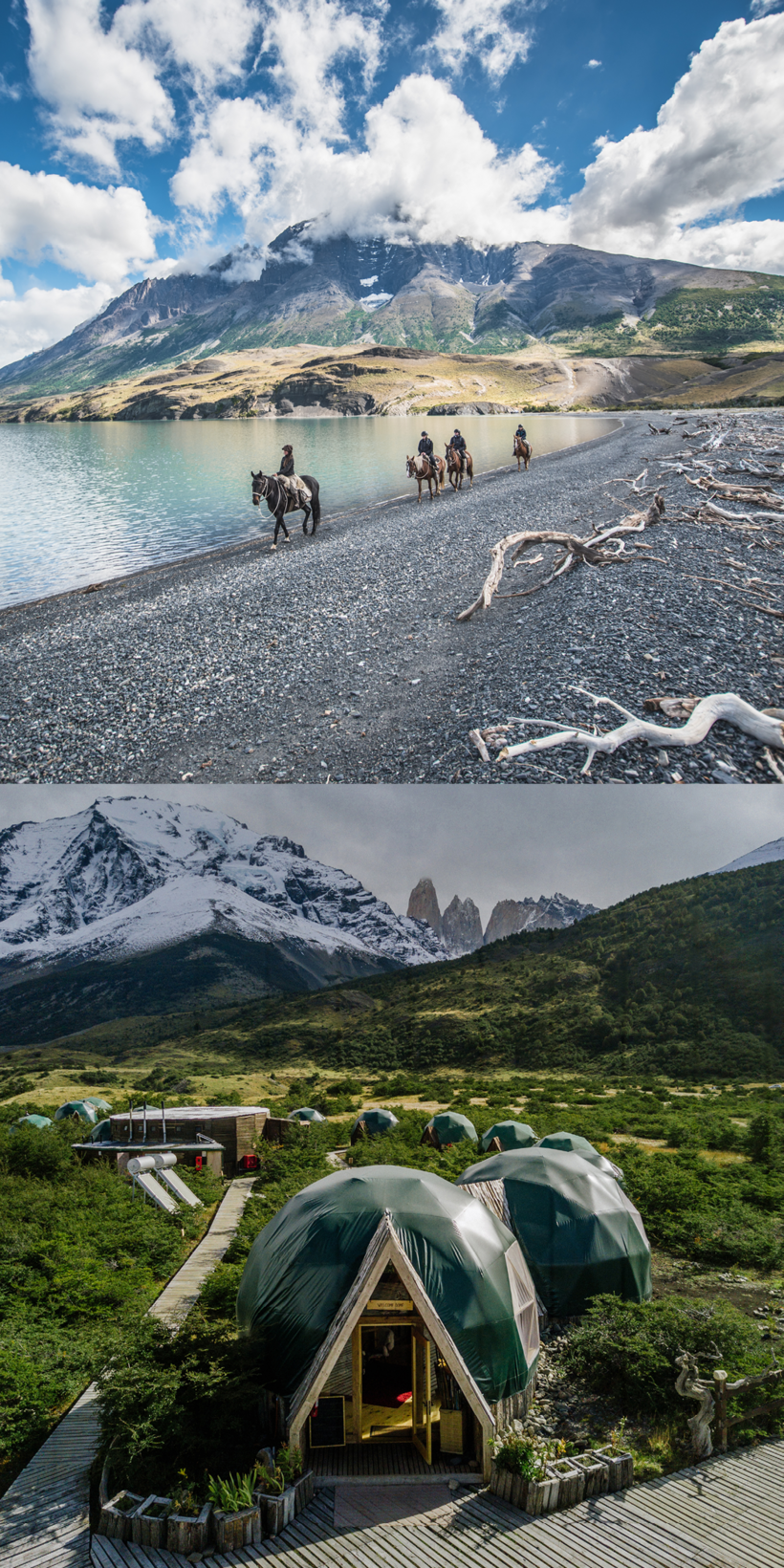From the plastic window of my geodesic dome, snow was blowing across the plateau in Chilean Patagonia. As a fair-weather hiker, the prospect of braving 14 miles through this unforgiving storm filled me with dread.
But I didn’t come to the end of the earth for nothing. Two years ago, I met a filmmaker who had traveled the world shooting Our Great National Parks, Barack Obama’s Netflix series. The most beautiful spot she visited? “Chilean Patagonia,” she replied without missing a beat.

So I layered up and headed out into the 700 square miles of wilderness that is the Torres del Paine National Park. An hour later, the sun came out and I was back in a T-shirt. “Welcome to Patagonia,” said my guide. “Here you get four seasons in one day.”
To assuage the guilt about my carbon footprint, I stayed in a fully sustainable hotel. (I’m trying not to think about all the flights it took to get there from my home in Vienna.) EcoCamp Patagonia opened in 2001 and claims to be the first hotel in the world to use geodesic domes. Constructed from dark-green plastic stretched over iron frames and connected by wooden walkways, the basic domes are little more than well-insulated (but unheated) tents with beds, but they can withstand winds of up 125 miles per hour.

Ours was technically a suite, because it included a wood-burning stove and its own bathroom. (Basic accommodations must share a communal one.) The four-day Wildlife Safari, which includes food, wine, hiking guides, and transfers to and from the airport, costs $3,300. The upgrade to the suite may have burned a hole in my wallet, but at least I didn’t have to run through a snowstorm to shower.
EcoCamp Patagonia was designed by two Chilean engineers with a passion for kayaking in the wilderness. Unlike several other hotels in this region, it’s conveniently situated right inside one of Chile’s most beautiful national parks. Those who prefer a more high-end experience flock to the Explora lodge, located near a glacier inside the park.

Travelers from around the world seek out the majestic mountains, turquoise lakes, glaciers, and icebergs of Torres del Paine. It is named for the three granite spikes that provide a spectacular backdrop to the EcoCamp. (Torres is Spanish for “towers,” while paine is the Tehuelche word for “blue.”) It’s also home to rare wildlife, including herds of guanacos, large camelids native to South America that are closely related to llamas. We also saw a puma, a large redheaded woodpecker, and an aerial display from a young condor. I think he was interested in my lunch box.
At EcoCamp, the dining room and bar occupy separate domes, and they are filled with comfortable sofas and chairs draped in sheepskin and alpaca throws. In the evenings, hikers huddle around the woodburning stove to drink wine and swap step counts and near-death experiences. During my visit, one guest was moved to make a speech, thanking a fellow hiker for saving him from falling rocks overhead.

Seventy percent of the camp’s energy comes from water, and the rest is from solar panels. In the interest of eliminating single-use plastic, guests receive reusable water bottles and metal lunch boxes. There’s a compost dome for the sewage, which is broken down and dried by a combination of worms and wood chips. In a demonstration of a circular economy, the compost is recycled in the greenhouse to grow the flowers that ultimately decorate the dining tables.
Most of the guests come from the United States, although there are also Brits, Germans, and Australians. According to C.E.O. Bernardo Dominguez, travelers to Patagonia tend to be either burned-out millennials or deep-pocketed, sinewy baby-boomers.

Given the freezing temperatures, I wondered why the domes weren’t heated. Dominguez argued that the idea was to maintain the sense of the adventure and communality of a group expedition into the wilderness. For that same reason, there’s no Internet or Wi-Fi service.
“If you have Wi-Fi and heat all the rooms, people won’t come into the communal domes and talk to each other,” he says. “Think of this place like a youth hostel for older people.”

For me, the digital detox was among the trip’s greatest pleasures. After 24 hours of abstinence, I slid into a Zen-like state, enjoying the wonders of nature without the permanent interruption of texts and e-mails. The irony of traveling 8,000 miles to find this peace was not lost on me, particularly since I live in Austria, which has its fair share of scenery. But it’s the scale of Patagonia—the big skies and vastness of the wilderness—that feels so unique on our crowded planet.
Kirsty Lang, a writer based in London and Vienna, is the presenter of the BBC Radio’s The Round Britain Quiz and a regular contributor to The Sunday Times
